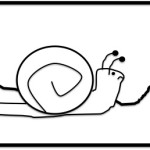Even though my first love will always be chemical ecology, I often find myself dabbling in the exotic realm of ecotoxicology. It’s kind of dangerous and sometimes sexy and I think that’s why I am drawn to it.

Source: WikimediaCommons
For the most part, experiments in ecotox are fairly cut and dry. Expose organism A to increasing concentration of potentially harmful chemical B and determine at what dose you see a response. In this system, we often expect that with an increase in concentration we increase the likelihood of an adverse effect. This “dose makes the poison” ideology can be traced back to the original gangster of toxicology himself, Paracelsus.
The traditional dose-response model comes in one of two delicious flavors: The linear response and the threshold response (witness epic powerpoint graph making below). The linear response represents a direct relationship between a nasty chemical and a negative effect, most usually your test organisms floating upside down in the porcelain throne, though there can be other adverse outcomes associated with critter behavior. The threshold response on the other hand depicts an organism that can tolerate low doses of a chemical to a certain point and then ends up on the same stairway to heaven or highway to hell (take your pick) as the linear response organism. Either way, no good can come of this. However, such information on lethal doses is critical for chemical management purposes.
Recently however, whilst being stumped by my own data, a rather brilliant ecotox friend shed light on the elusive third model known as Hormesis. I know, I know… it sounds like parseltongue, but I checked with some of my peeps over at Hogwarts, rest assured. It’s not.
The hormesis concept puts a very different spin on the original models. Instead of the negative or neutral responses predicted by the linear and threshold examples, organisms undergoing hormesis have a positive response at low chemical concentration levels.
What does this mean exactly? Well, let’s put it in a different context we can all better relate to shall we?
Scenario: You walk into your favorite club/bar and you are ready to get down with your bad self. Looking at our graph, we will put the DSN poison of choice on the x-axis (subliminal advertising so maybe they will give us free stuff) and our favorite sleazy scientist on the y-axis to represent “amount of game” as our response variable. Experiment is a go.
Drink one: You are doing good. Maybe even working up the courage to bust a move or two? Who knows the night is young.
Drink two: Oh man, you are living large and sitting pretty. You are here for the ladies and the dranks and ain’t no one going to stop you. You are at the peak of your game.
Drink three: This is where you become “that guy.” All game is slowly (or quickly) going out the window.
Drink four: Even Ke$ha would be embarrassed for the hot mess you have now turned into.
Drink five: If you are still conscious at this point. We should be friends. However, this is highly unlikely.
Note: Usually when your test organism keels over from alcohol poisoning, it’s safe to say the experiment is over.
This faux, but oddly realistic example provides a perfect depiction of hormesis. At low doses of a toxin, your performance is actually heightened until your alcohol just becomes too much to handle. Why does this happen? Though this response has been seen more and more frequently in many ecotox experiments, the mechanism is a bit more difficult to get at. Some speculate however, that this phenomenon stems from an organism being able to utilize certain chemicals to their benefit or that the chemicals are putting their systems into overdrive mode, thus eliciting a positive response till they can no longer handle the increasing toxic effects.
It’s like Kayne (or Daft Punk depending on your musical preference) always says, “That that that that don’t kill you…”
References:
Calabrese EJ, Baldwin LA (2003) Toxicology rethinks its central belief: Hormesis demands a reappraisal of the way risks are assessed. Nature 421: 691-692
Calabrese EJ, Baldwin LA (2003b) Hormesis: the dose–response revolution. Annu Rev Pharmacol Toxicol 43: 175–197
Share the post "Hormesis: Why drinking in moderation might actually improve your game"







Accurate.
Hormesis is to toxicology what astrology is to astronomy.
Calabrese is a stooge. Don’t fall for his nonsense:
http://www3.nd.edu/~kshrader/pubs/ksf-2010-calabrese-synthese.pdf
Bob, your correlating Hormesis with astrology is troublesome, not to mention completely inaccurate. Under what basis is Hormesis, a proven scientific concept, in any way shape or form the same as astrology – the phony belief that the stars’ alignments, coupled with the day of the year, determines peoples’ life choices? Short answer: They’re not related whatsoever!
Hormesis is NOT a “proven scientific concept”. Neither is astrology. They are both fallacious.